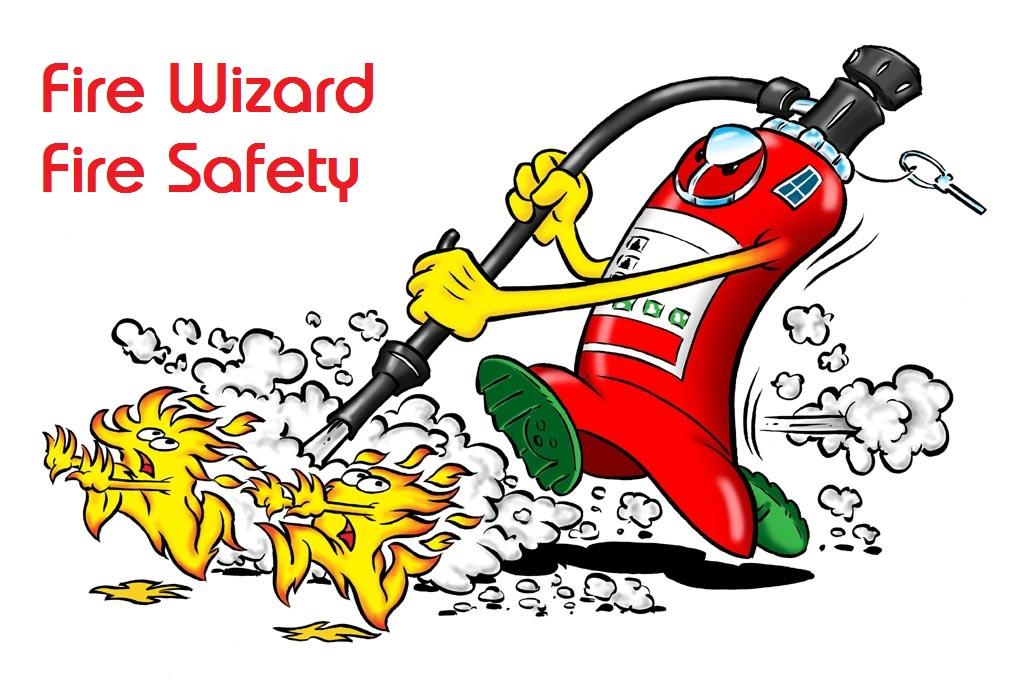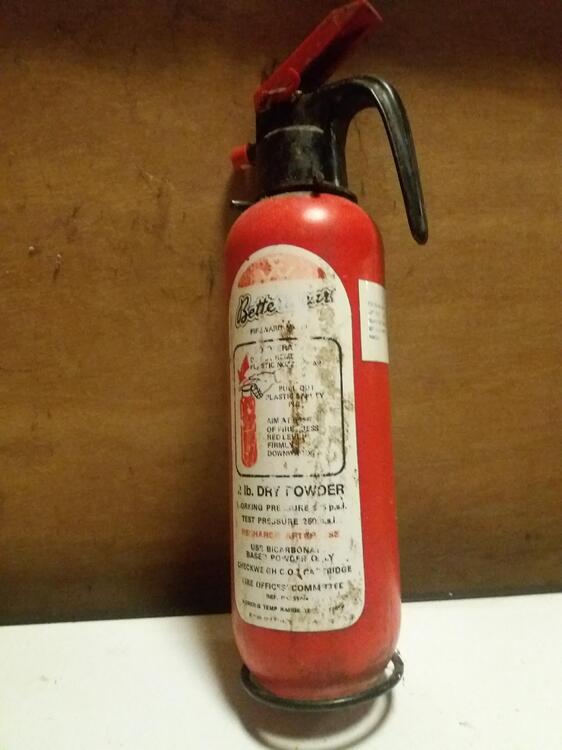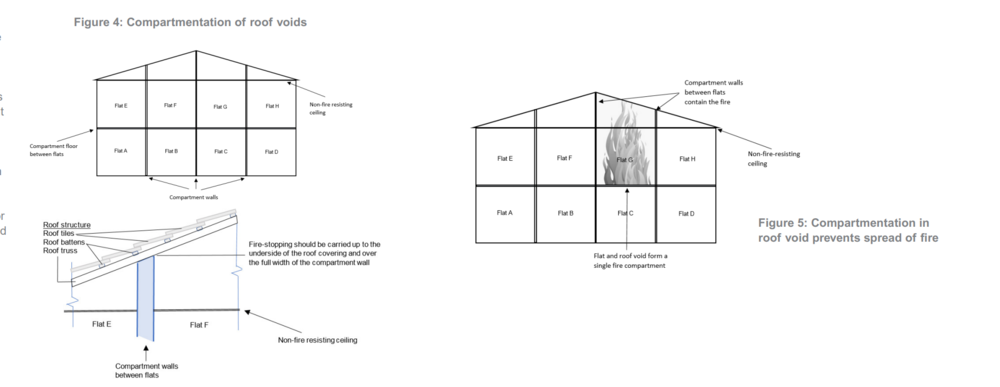-
Posts
2,707 -
Joined
-
Last visited
Everything posted by AnthonyB
-
As people won't naturally starburst to each exit equally there's a chance you will have an excess number using a door with a strong risk of crush and the door being blocked - the Station Nightclub in 2003 was an example - there were multiple exits but people went for the familiar ones, which opened inwards and so one of the leaves got shut under pressure and the other got blocked with bodies. Also the doors cannot have panic fastenings if inward opening. Options are: - Re hanging doors - Having Stewards at each door to be able to bolt them open in an evacuation - Do nothing, accept it on occupancy against unit exit width only and keep your fingers crossed that there is never a full house evacuation under panic!
-
You've sort of answered your own question! If the zone plan is a decent one with the actual layout rather than just a shaded outline it still has value, otherwise it ticks the BS box with little benefit.
-
Hardly mitigating the effects of fire as required by the legislation although it could secure escape. If you are unfortunate to have a fire that isn't controlled, the damage and disruption bill and investigation by the loss adjuster as to why it wasn't put out will no doubt see you do have them next time!
-
Due to the quantity stored it appears to need to be treated as a dedicated store (otherwise the storage amount permitted would be less) so shouldn't have anything else - are you sure it's six hundred and thirty litres as it would have to be a pretty big cupboard? Guidance: https://www.hse.gov.uk/pubns/priced/hsg140.pdf https://www.hse.gov.uk/pubns/priced/hsg51.pdf
-
If it's an high risk then it's recommended for indemnity purposes to tell the client as once, both verbally and in writing (we have debrief forms for that purpose) rather than leave it until the report. Imminent risk to life is a moral choice rather than a legal obligation - do you tell the client and leave it or, if you believe they aren't actually going to act escalate it? The public interest test and whistle-blower's legislation would indemnify the data breach, but you would (if they found out) loose a client. It's a judgement call really - there is no single answer.
-
There hasn't been a 6 monthly emergency lighting test for 16 years other than a means to make more money by out of date or unscrupulous contractors, the monthly test has been around for decades as has the annual EL test. Depending on the type of detectors and their purpose the service interval could be 6 monthly, annual or nothing at all !
-
Despite them being perfectly legal at the time of install I know recently some local authorities have wanted them removed, certainly if nothing else they are a burden on the service charge.
-

Mains smoke alarm green light only works when the light switch is on
AnthonyB replied to Michael 65's topic in Smoke Alarms
If you were going to ban any it would be the battery only ones, where there have been multiple deaths over the years due to flat or missing batteries - this is why the law has, for many years, required the mains ones in new or refurbished premises. If you don't know what you are doing, get an electrician to fit them. -
As long as the code isn't required in the direction of escape there would be no automatic issue with doing that.
-

'Landlords supply' for L2 system necessity/legality
AnthonyB replied to mojolicious's topic in Fire Alarm Systems
The biggest issue with no common electricity supply is where the tenants are all on prepayment meters as there is the risk of an extended period of power loss to the system where a resident cannot afford power. However the answer to that is to provide extended back up power supplies beyond the 72 hours normally provided. As you aren't prepayment there isn't this issue and whilst using a landlord supply is preferred it's not a legal requirement and a tenant feed could be used as long as they are recompensed for the usage. As for spurring off your feed that's one for an electrician to answer! -
Simple answer - it doesn't! If you immersed the plastic extinguisher in reverse osmosis filtered water, especially warm water, and left it there in the water then gradually tiny amounts of plastic would 'leach' into the water (why you are only meant to use most plastic bottles once) but this has nothing to do with a plastic extinguisher in service.
-
Sounds like it's a CLASP building for which there are limited practical improvements that can be made to the passive FP issues as they are endemic to the means of construction (they were meant to be temporary and all demolished after 10-15 years). The usual approach is L1 fire alarm, get everyone out and sacrifice the building. The various editions of BB7, the predecessor of BB100, may deal with this, I would have to check my copies in the office. There are some sector guides dealing with what you can do to improve CLASP buildings fire protection, it would be worth casting your eyes over those too.
-
If all the distribution boards and meters are new and compliant with current wiring regulations they should all be made of non combustible housing material and not need further protection. If not then they would need the required fire resistant enclosure, which could be a traditional plasterboard and stud enclosure or a purpose made electrical board enclosure https://envirograf.com/product/electrical-consumer-unit-and-distribution-board-fire-protection-system/
-
Why is the door being added? If it's a cross corridor door in a corridor with escape in two directions to split the corridor to protect the escape route (required for corridors over 30m under old guidance, 12m in modern guidance) then effectively it needs to be a FD30S door. (In the old days it could be a lower specification fire check door with smoke seals as the main purpose was to protect the corridor from smoke, but now proper spec doors are required) The wall/partition around the door also need to be to 30 mins as well - any ceiling void also needs firestopping/partitioning above the door/partition.
-
The green lights are tiny little LEDs in the emergency light fittings indicating a mains supply is entering the unit's battery charger. They are brighter than the red LEDs that used to be used for the same purpose in the past, but it's an integral part of the fitting and not optional. The external lights are 'maintained' emergency light units (i.e. always lit even if the mains supply is working) and I would assume that they have been installed to ensure the stair is lit for use in an emergency without having to mess around looking for a light switch. Minimum light levels are given in BS5266-1 and for escape routes would usually be 1 lux along the centre line of the route (2.5lux if elderly, infirm or otherwise needing a higher light level)
-
The outer container is just an alkaline solution of water, sodium bicarbonate and a foaming agent/stabiliser such as saponin, liquorice or turkey red oil. Whilst you shouldn't drink it it's not really that dangerous. The inner container is a water based solution of aluminium sulphate which is mildly toxic and can cause severe eye damage (and damage to metal surfaces) but isn't really deadly. Whilst the chemicals will have degraded over time, they will still react, producing foam under pressure and the cylinder is likely to be in poor condition so just to be safe do not empty it by setting it off to discharge. Carefully remove the head anti clockwise, if after the first couple of turns there is a hiss through the vent holes, then there is pressure inside (unlikely though) so stop until the hissing has stopped before unscrewing further. The contents can't go into the water table or normal street drains so should go down the foul waste for treatment i.e. the toilet, but not together and I'd flush a clean bowl after flushing the first solution before adding the second & flushing. To see your actual model of extinguisher being used as intended watch this (it's at the end):
-
Powder can be used indoors, it's a fallacy that the British Standard bans it, just that a consideration of the effects on discharge should be made in a H&S risk assessment. The medium to large fires thing is a fallacy as portable extinguishers are made (& have been for over 50 years) specifically for smaller fires. Some of the substances you mention fall into the Moderate category for foam destroying action but none are severe. They will destroy a foam blanket, particularly the thin film formed by the non aspirated spray of current extinguishers. Even AR foams have a vastly reduced performance - a 9 litre low expansion branch-pipe AR-FFFP extinguisher would usually achieve a Class B rating of 183B-233B (the size of a test fire of aviation fuel/water mix in litres in a circular tray) but on Polar Solvents only gets a 34B rating. You generally need to apply foam faster and in great quantities with Polar Solvents to compensate for the increased rate of breakdown of the foam blanket. Fire fighting provision should be based on the advice in the MSDS which will usually say AR Foam - if you go against what it says you transfer all liability onto yourselves Having said that, I've used standard AFFF on fire trays of iso-propanol in the past (when we still did 'proper' live fire training) as at the time I had a good cheap supply and I found it burned cleanly (no smoke) but still had a clear yellow flame. Generally it took a little longer and a little more foam to extinguish, but a 6 litre extinguisher would cope with 2 or 3 litres. However the foam blanket quickly degraded so there would be a re-ignition risk and you wouldn't get the protection you normally would from using foam and it would be akin to having used CO2 or Powder. If the expected fire size is only going to be a couple of litres at a time then you may get away with standard AFFF, but for any fire in depth or using greater quantities then AR compounds would be preferred. Bear in mind foam is best on contained fires and struggles with spills, primarily where the fire is running. I've supplied them a couple of times over the years, many fire protection companies struggle to obtain them, but there are still 3 manufacturers offering them ex-stock so I can easily obtain them. The main reason you are getting kickback will be simple - AR-AFFF & AR-FFFP extinguishers cost several times the price of standard foam extinguishers!
-

Mains smoke alarm green light only works when the light switch is on
AnthonyB replied to Michael 65's topic in Smoke Alarms
Sounds like its been connected to a switchable live and not a permanent live. Some domestic lighting circuits are wired so there is only a switchable live from the on/off switch to the light fitting. -

FRA - Removal of fire door to an office
AnthonyB replied to Al Rutter's topic in Fire Risk Assessments
Can you sketch the layout? Is the floor all in the same occupancy? How long is the corridor? Are smoke detectors in every room as well as the corridor? It may be OK, but there are several factors to consider first. -
Firstly you need to refer to this guidance which covers your situation as many fall into the trap that it's simple as it's 'just a stair': https://www.local.gov.uk/sites/default/files/documents/fire-safety-purpose-built-04b.pdf This will give you the technical background knowledge required for a suitable & sufficient FRA unless your development includes an External Wall System (e.g. cladding) or balconies made from combustible material in which case the guide needs to be supplemented by the current MHCLG guidance: https://www.gov.uk/government/publications/building-safety-advice-for-building-owners-including-fire-doors Most FRA templates, whilst visually different in some cases, follow the recommended template (known as PAS79, a specification produced by fire safety experts for publication by the British Standards Institute) and so all cover Areas of Concern that are considered necessary for a suitable and sufficient FRA - this will include aspects not necessarily relevant in every case, but this is easily resolved by simply marking an area as not applicable as not present - that's what I do! It's important you feel competent in carrying out an FRA as you as an individual can potentially retain the (criminal) liability for the document as the author if it proves to have been unsuitable and risk assessors have been prosecuted in the past. This isn't to say you must use a third party professional (as these aren't always up to scratch either!) but ensure that you use all the correct guidance, which I have linked for you. It may appear daunting at first (it's large) but that's what the task entails - have a read and then consider if you feel you are able to work with it - if it seems overwhelming then you should use an external competent person, however as it's designed to be relatively easy to follow, just comprehensive, you may well be OK, after all if stuck on the odd point or two you can always ask on here!
-
Required in some form since the early 60's. The official guidance (LGA Guide) has a timeline of requirements, mostly in CP3 until 1991 when Approved Document B was introduced. In some cases it was a simple as having openable windows on landings or a permanent vent at the top as oppose to powered auto vents but in anything other than the smallest blocks is been a requirement for decades. Worryingly too many fire risk assessors are ignorant of this and miss it out of their FRAs
-
The chains are not required anymore and usually Building Regulations only require you to not make conditions worse than under the original Building Regulations approval so like for like would be OK - however the addition of the intumescent strips would be preferred as it vastly increases the efficacy of the door (assuming it's closed!)
-
The Fireward brand of plastic bodied cartridge operated powder extinguisher was very popular in both the commercial and domestic/leisure/motoring markets with tens of thousands sold under various distributor brands including Betterware, Chubb, Angus and many more. However the natural decay and aging of plastic, particularly where subject to external factors including UV from sunlight, was found to make the shell brittle - furthermore impact damage could cause tiny fractures that could not be readily visually detected. Thus they could sit there fine until operated when they would be subject to a rapid rise in pressure and if the shell or headcal/valve was in any way compromised then there could be a rupture or ejection of parts. Pressure testing could not be carried out readily unlike with steel & aluminum cylinders - also with steel cylinders degradation is readily seen (rust!), so ultimately the model was discontinued (there was also a move away from cartridge extinguishers to stored pressure extinguishers which helped push things along) and for the last 20 years or so servicing standards have required non metal bodied extinguishers to be declared obsolete, not serviced and replaced unless made after 2002 (when more modern synthetic materials such as Kevlar had been developed for pressure vessel use)
-
Usually for lofts instead of fire resistant ceilings below you continue all the fire rated walls below up to roof eaves level:
-
You will need Building Regulations approval for this change. Local Authority Building Control may: - Reject the plans - Require changes in fire protection (e.g. higher category of fire alarm, sprinklers, fire curtains and similar) - Accept them as they are They may accept it as it is if both of the following apply. i. The travel distance from the flat entrance door to any point in any habitable room is a maximum of 9m. ii. Cooking facilities are remote from the main entrance door and do not impede the escape route from anywhere in the flat. Otherwise they may require sprinklers and an LD1 fire alarm system (smoke & heat alarms throughout the whole flat)



